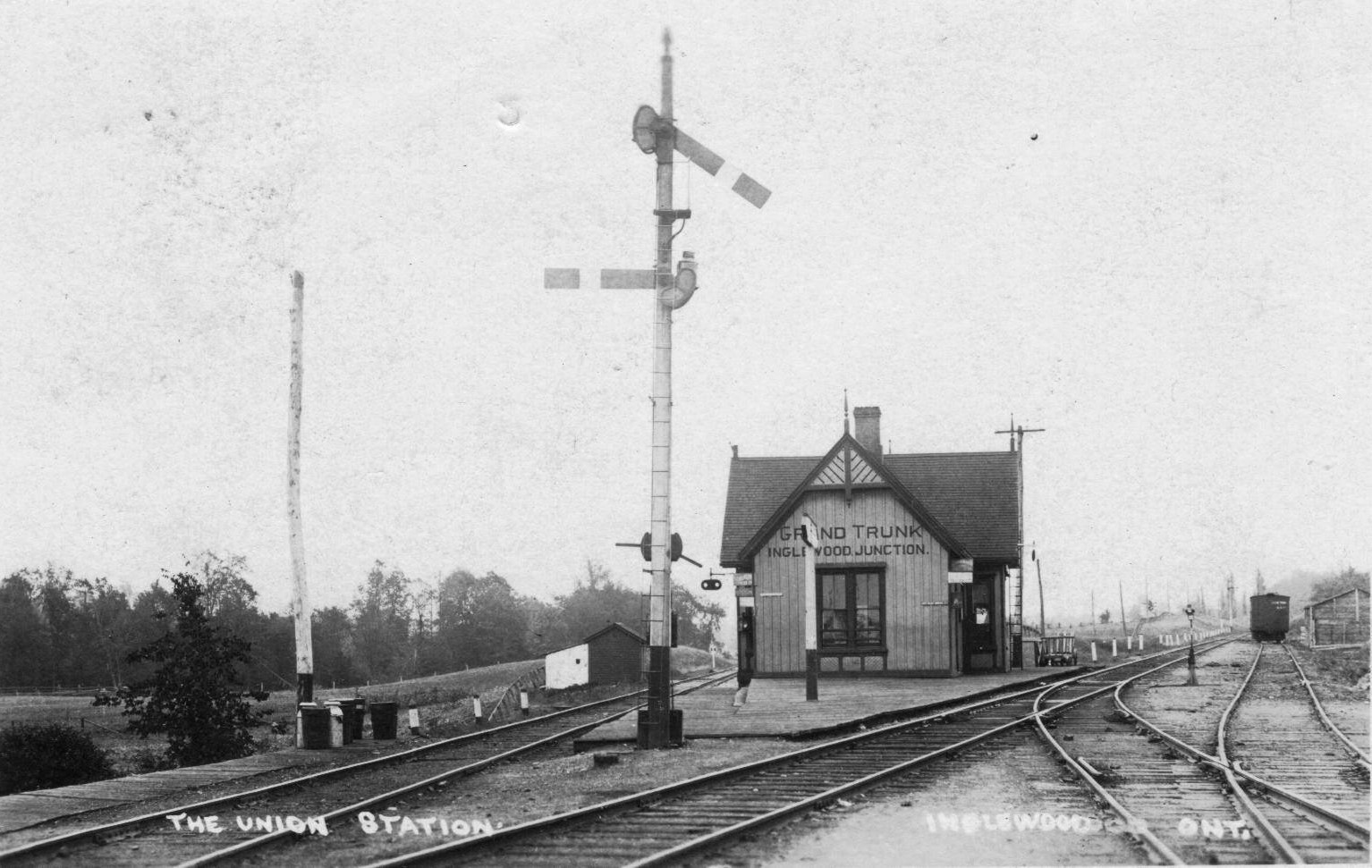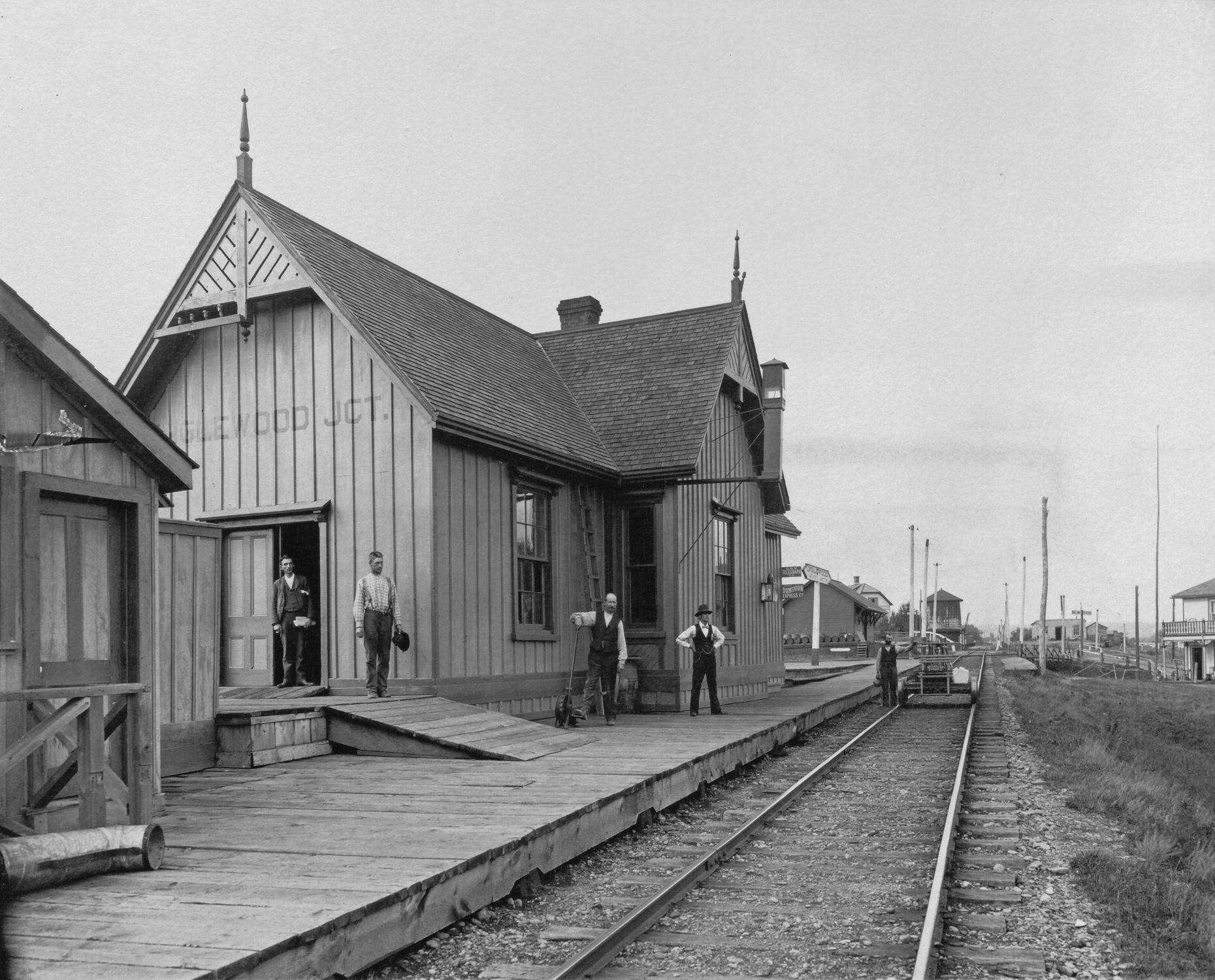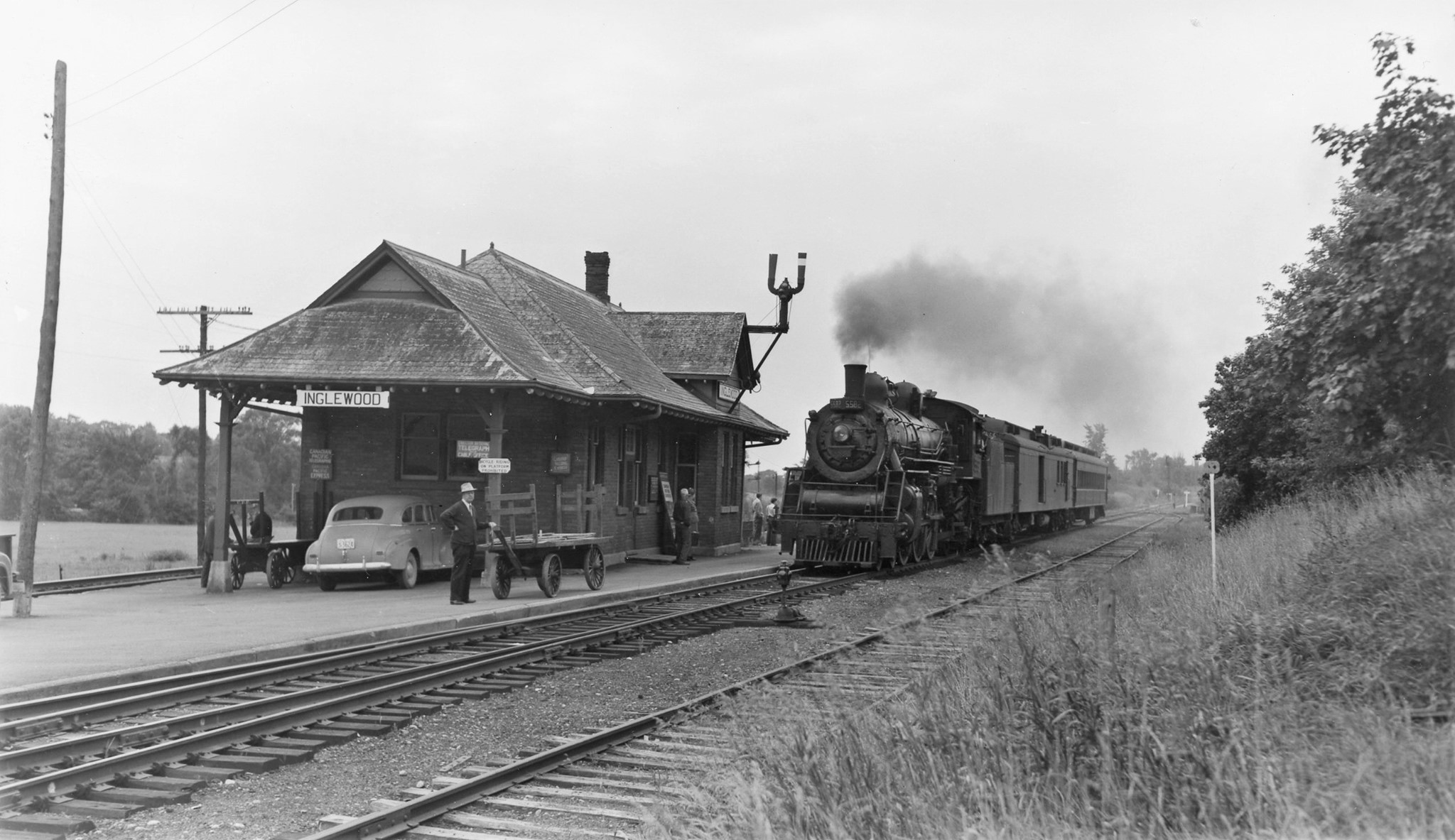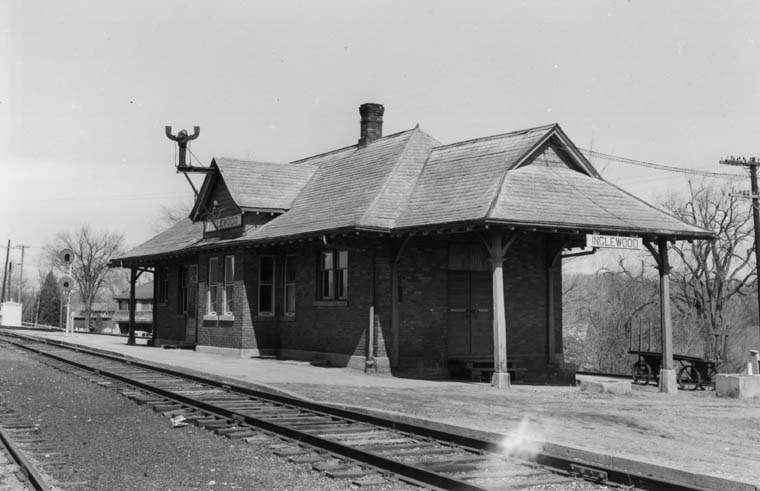Summary
The Hamilton & North-Western Railway was built through present-day Inglewood in 1877, then known as Sligo. It was soon joined by the Credit Valley Railway, who constructed their line diagonally across the H&NW in 1879. The Northern Railway of Canada and the Hamilton & North-Western merged later in the same year, forming the Northern & North Western Railway. The first station at Sligo was built in 1880 by the N&NW, situated in the fork created by the junction on the south side of McLaughlin Road. It was designed to be shared by both railways simultaneously, for which the Credit Valley Railway would pay $53 per year and half of the station expenses to the Northern & North Western. A settlement soon popped up around the station, including a general store and a hotel that was meant specifically to serve railway passengers. By 1883, the community’s name had changed to Riverdale and later the same year the Canadian Pacific Railway gained control of the Credit Valley Railway. A total of six trains on the Northern & North Western and two trains on Canadian Pacific would serve Riverdale on a daily basis by the mid-1880’s. The community’s name conflicted with another Riverdale east of Toronto which caused issues for the post office, prompting the name to change once more to Inglewood in 1886. A couple of years later in 1888, the Northern & North Western was itself acquired by the Grand Trunk Railway under whom service was slightly reduced to four daily trains by 1893. Both lines serving Inglewood could have been described as “branch lines”, having been built through rural areas and carrying mostly local goods and passengers.
In 1911, Inglewood Station succumbed to fire and a boxcar was used as a temporary station in the meantime. A proper replacement was built in the same location several years later in 1914, this time with sturdier brick exterior walls. The Grand Trunk encountered financial difficulties in the early 20th century that culminated in its nationalization and subsequent merger into Canadian National in 1923. As automobiles started to appear during the early 20th century, branch line passenger ridership was one of the first things to feel the effects. Several old stagecoach routes in the area were turned into provincial highways in the 1920’s, allowing for a higher amount of car traffic at faster speeds than before. Service by Canadian National to Inglewood was reduced further to four trains per day. The Great Depression had a strangely positive effect on Inglewood’s train service, as the negative effects on ridership prompted the closure of another rail line between Orangeville and Bolton in 1932. The line previously belonged to the Toronto, Grey & Bruce Railway, a rival of the Credit Valley Railway, but both ended up in the possession of Canadian Pacific. Trains 705 and 706, which had previously used the former TG&B line, were subsequently rerouted through Inglewood bringing the total daily trains to four on the Canadian Pacific side. The Canadian National side, on the other hand, saw a decrease to just one train per day in each direction.
The last Canadian National passenger train to serve Inglewood left on July 3rd, 1960, and the CN station agent was removed in 1961. Canadian Pacific continued to serve the station into the 1960’s, having replaced the conventional steam-hauled passenger equipment with self-propelled Budd Rail Diesel Cars in 1956. Passenger service ended entirely at Inglewood by 1970, and a year later the structure was torn down on November 22nd, 1971. The CN line saw its last freight movement in 1969, but it sat abandoned for over a decade until it was torn up in 1984. It’s since been turned into the Caledon Trailway, a mixed-use trail running from Terra Cotta to Tottenham. Canadian Pacific continued to use the line for freight until 2000, when the line from Orangeville to Streetsville was bought by the Town of Orangeville to ensure service would remain to the town’s industries. It was contracted out to Cando Rail, a shortline operator based out of Manitoba. A tourist passenger excursion was established shortly after called the Credit Valley Explorer, bringing visitors from Orangeville to Snelgrove with a stop in Inglewood along the way. Trillium Railway took over the contract in 2018, and the Credit Valley Explorer ceased to operate in February of that year. Freight service was terminated in December 2021 and the line was subsequently torn up with plans to turn it into a recreational trail.
Condensed Station Info:
| Location: | Served By: | Current State: | Date Built: | Date Demolished/Burned: |
| McLaughlin Road and McKenzie Street | N&NW (1880 – 1888) CVR (1880 – 1883) GTR (1888 – 1923) CNR (1923 – 1960) CPR (1883 – 1970) | Demolished (Both) | 1880 (First) 1914 (Second) | 1911 (First) 1971 (Second) |





